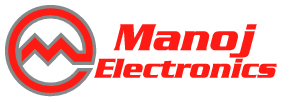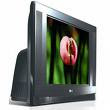Video equipment | digital video recorder, flat panel TV, machine vision
Video electronics are capable of capturing, recording, processing, transmitting, and reconstructing moving pictures. As digital products have been improved in processing power, display capability, and storage capacity, various video equipments have been developed and spreaded rapidly throughout the market. Digital video disk players (DVD),
digital video recorders (DVR), laser disc players, video cassette recorders (VCR), and televisions are the standard entertainment equipment for general households. Those video products use display technologies such as cathode ray tubes (CRT), liquid crystal displays (LCD), polymer dispersion liquid crystals (PDLC), and plasma display panels (PDP). Televisions have existed for a long history and are now in much advanced fabrications and performances. Currently commercially available TV products include flat panel televisions, projection televisions, and portable televisions. DVD players and recorders allow the user to playback the disc contents using one of a plurality of playmodes. Video signal processing systems provide consumers a vast number of options for controlling playback of a video title stored on such a media. Video systems are also widely used in business, manufacturing, automobile, and various other industrial applications for process control, communications, observation and surveillance. Closed circuit televisions (CCTV) are used in factories, office buildings, hotels, educational institutions for surveillance and security purposes. Video surveillance systems often monitor relatively large areas by means of several video cameras or domes.
LCD TV, flat screen TV
The flat panel display devices include LCD devices, plasma display panel (PDP) devices, field emission display (FED) devices, and electroluminescent display (ELD) devices. LCD panels have developed as an alternative to cathode ray tubes (CRTs), offering the advantage of a thin profile and brilliant display. LCD panels have been used for a number of applications, including computer monitors and television displays. An
LCD TV displays desired images by applying an electric field to a liquid crystal layer with dielectric anisotropy between two panels and adjusting the strength of the electric field to control the transmittance of incident light onto the panels. The active matrix TFT LCD displays a picture corresponding to television signals on a pixel matrix having liquid crystal cells.
Digital set-top box
Set-top boxes are used to control the conversion of the media signal transmitted from a content provider into the images and sounds that are provided by a corresponding media display device. Television set-top boxes provide tuning capabilities for cable and satellite television systems. Typically, a
set top box connects to a television set and interfaces various media such as cable television broadcasts,
satellite signals, stereo components, internet connections via a telephone line, DVD and VCR devices. Digital broadcast systems include direct broadcast digital satellite systems, interactive internet access systems, and digital cable systems. A digital set top box may be used as an interface between the digital broadcast systems and a television set, computer or other remote user terminals.
Digital TV receiver
Digital television is becoming increasingly popular in the world. Compared with conventional analog broadcasting, the digital broadcasting is characterized in that broadcasting of higher video quality and higher audio quality can be done in the same frequency band. A
digital TV broadcasting system in general uses a terrestrial VSB (vestigial side band) transmission system. Digital television receivers include an antenna, a tuner, a demodulator and a decoder coupled to a display. The digital
TV decoder typically has an MPEG video decoder, a unit for outputting decoded video data, and an on screen display (OSD) unit. The decoder processes a bit stream corresponding to each class inclusive of discrete cosine transform (DCT) coefficients and motion vector information.
High definition television (HDTV)
High-definition television (HDTV) is a digital television format which provides approximately twice the vertical and horizontal resolution of existing television standards. A HDTV displays a highly finely defined television picture on a wide screen having a large display area so as to provide novel attractive features which cannot be exhibited by the current conventional television broadcasting. MPEG video data is used to support HDTV wherein the video frames are of higher resolution than those used in NTSC signals. MPEG-2 standard defines a complex syntax which contains a mixture of data and control information. A
HDTV receiver receives an HDTV broadcast so that a user can view the broadcast. HDTV is especially advantageous for use in wide screen theater and home TV projection.
Car video system
Modern automotive vehicles incorporate an ever-increasing electronic devices. Among the car video devices are TV tuners, DVD (digital versatile disc) players, and car navigation systems. Passenger vehicles have television sets for viewing while riding in the passenger vehicle. These video display units are often interconnected to recording and playback devices, such as video cassette recorders and digital video disc units, so that occupants of the passenger vehicle may enjoy movies and other prerecorded programs as well as live television broadcasts. Video display screens are used in vehicles for providing information to the driver or entertainment to the passengers. Video screens used with navigation systems are typically mounted on the dashboard for providing GPS data to the driver.
Home theater systems
A home theater system reproduces the impact and sense of movie-like reality and the sensation of a movie theater. A modern home theater system may comprise a large screen television or display, a stereo receiver, a VCR, a cable decoder, a
DVD system, a high power audio amplifier unit, cassette or CD players, and several speaker systems. The quality of sound and video experienced in home entertainment systems is mostly determined by the quality of the components in the final stage of the signal path: the speakers and the display devices. Most home theater systems are equipped with image projectors to display a movie in a home theater environment. Projectors for home theaters are typically liquid crystal projectors, and digital light processing (DLP) projector that uses a digital mirror device.
Plasma TV
A plasma display device is a display device in which a voltage is applied to discharge cells containing a discharge gas consisting of a rare gas sealed in discharge spaces, and phosphor layers in the discharge are excited by UV rays generated based on glow discharge in the discharge gas, thereby achieving emission of light. Plasma display panels (PDP) are widely used for flat TV screens. A plasma display panel can be structurally grouped into a direct current (DC) type panel in which electrodes are exposed to discharge gas, and an alternate current (AC) type panel in which electrodes are covered with a dielectric film, and are not exposed to discharge gas. lasma display panels offer the advantages of thin structure, freedom from flicker, a high display contrast ratio, and rapid response speed.
Video cassette recorder (VCR)
A video cassette recorder (VCR) is a device for recording and reproducing a video signal and an audio signal recorded on a recording medium. A video cassette recorder can record image and audio signs onto a magnetic tape and reproduce the signals from the magnetic tape on which the signals are recorded. The video cassette recorder can reproduce the recorded video signal at a normal, low or high speed, or can stop reproducing the signal. A video cassette recorder generally includes a base, a running system installed on the base for drawing out a magnetic tape from a cartridge and for running the magnetic tape along a predetermined path, and a head drum assembly for recording and reproducing video signals on and from the magnetic tape. The head drum assembly is used for recording the video signals onto the tape and for reproducing the video signals from the tape on which the signals are recorded.






